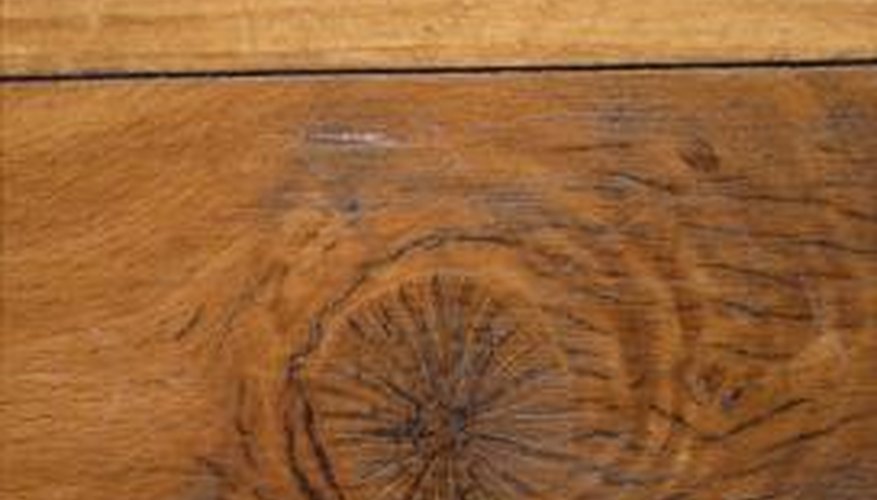Wood dyes can be purchased in deep, vibrant colours, enhancing your natural wood product. Applying wood dye to your small indoor furniture piece can highlight the wood's texture, emphasising the look that drove your desire to have it in your home. But using wood dyes are not without drawbacks. And the top coat you put over the wood dye can impact your final product look, too.
Advantages
Dye has smaller particles compared to wood stains. Smaller colour particles can penetrate wood more deeply. Colour that is able to penetrate wood more deeply highlights wood's natural tones better than applied colour that sits on the surface of the wood, which is what wood stains do. Dye beats stains for colouring wood more evenly as well. And dye dries clearer, presenting a more accurate picture of the natural character of the wood being coloured.
- Dye has smaller particles compared to wood stains.
- Colour that is able to penetrate wood more deeply highlights wood's natural tones better than applied colour that sits on the surface of the wood, which is what wood stains do.
Disadvantages
Inexperienced users of wood dyes can create wood surfaces that look streaky and uneven, due to their lack of experience with using such a product. This difficulty with applying wood dye evenly doesn't just apply to new users, as wood dye is more difficult to apply than a wood stain. Wood dye can fade over time if the item is subjected to direct sunlight on a daily basis. These disadvantages make it a process best used on smaller wood projects that will be in shaded areas of the home.
- Inexperienced users of wood dyes can create wood surfaces that look streaky and uneven, due to their lack of experience with using such a product.
Considerations
Wood dye can be purchased already mixed by the manufacturer, requiring no prep work on your end before application. It also is available in a powder form, necessitating mixing it with one of three types of liquid: water, oil or alcohol. Pre-mixed dyes eliminate potential room for error in the mixing process, which is a decided advantage. The disadvantage of mixing it yourself is the possibility you will not achieve the desired look you want if you mix incorrectly.
- Wood dye can be purchased already mixed by the manufacturer, requiring no prep work on your end before application.
Signficance
According to Wood News Online, water-based dyes tend to be lightfast, while oil-based wood dyes have more of a tendency to fade the fastest. Only select oil-based dyes if your wood flooring or furniture piece will not experience much wear or tear and occupies a part of the home that is more shaded, away from direct sunlight. Don't forget to consider how use of a top coat on your wood dye will impact potential wood colour later.
